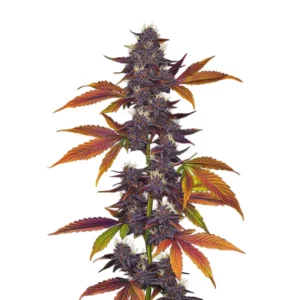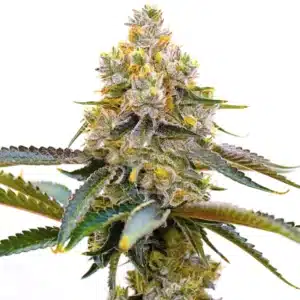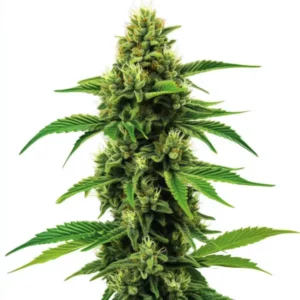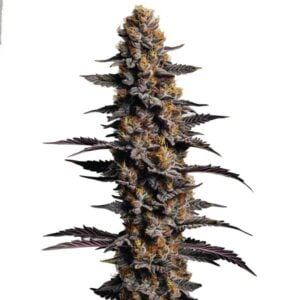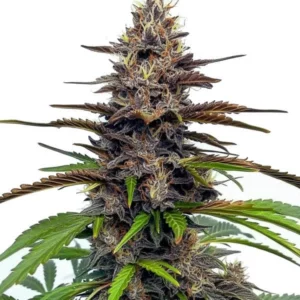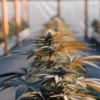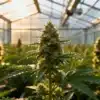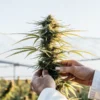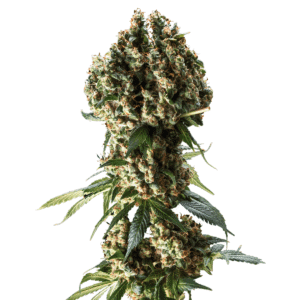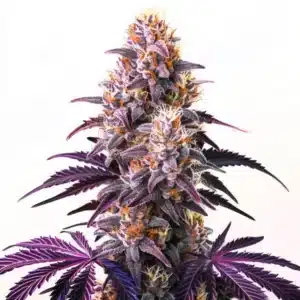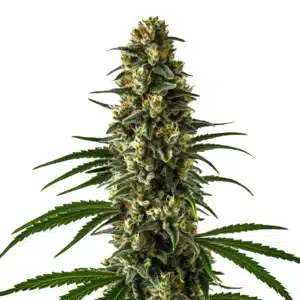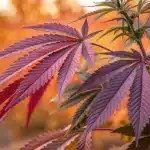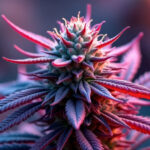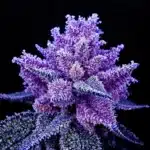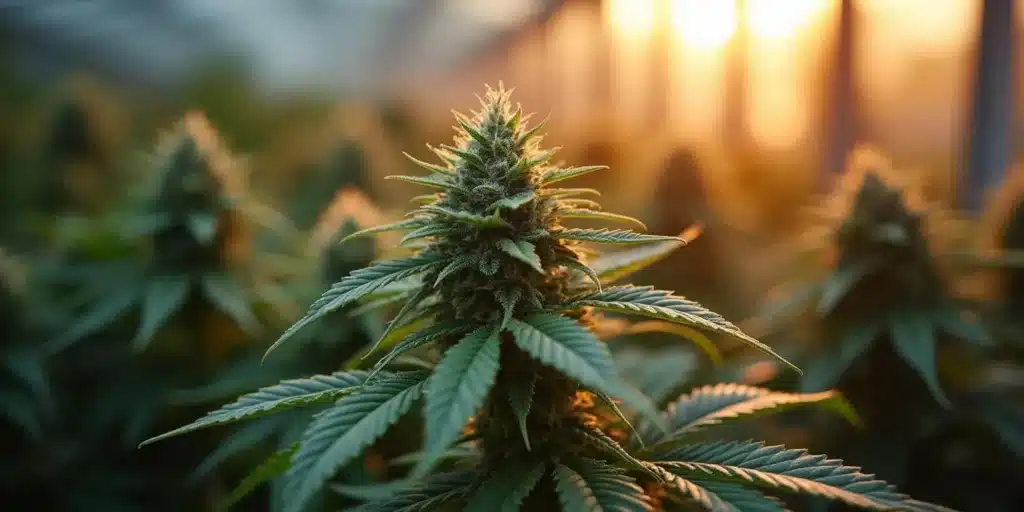
Anthocyanins in Cannabis: A Closer Look
Anthocyanins in cannabis are a fascinating topic for both novice and seasoned growers. These compounds belong to the flavonoid family and are responsible for the vivid colors you see in cannabis plants. From deep purples to rich reds, anthocyanins contribute to cannabis pigmentation in a big way.
Many growers aim to cultivate strains with high anthocyanin concentration. Not only do these plants look stunning, but they also boast a range of potential health benefits. The health benefits of anthocyanins in cannabis include antioxidant properties that may contribute to better overall health.
Recommended Strains
Auto Purple CBD
|
|
CBD | 17% – 19% (Medium) |
|
|
Type | CBD Autoflowering |
|
|
Yield | Low |
|
|
Phenotype | 70% Indica / 30% Sativa |
Amnesia Purple
|
|
THC | 18% - 21% (Medium) |
|
|
Type | Feminized |
|
|
Yield | Medium |
|
|
Phenotype | 30% Indica / 70% Sativa |
Understanding how anthocyanins affect cannabis potency and color can be an exciting journey. Whether you’re growing your first plant or your hundredth, there’s always something new to learn. Let’s take a deep dive into the world of anthocyanins in cannabis and uncover their many secrets.
The Science Behind Anthocyanins
The role of anthocyanins in cannabis pigmentation is more than just skin deep. These compounds are water-soluble pigments that belong to the flavonoid group. They are found in the cell vacuole and become more prominent as the plant matures.
Temperature can influence the production of anthocyanins. Colder temperatures tend to enhance their visibility, leading to more vibrant hues. This is why some growers manipulate environmental conditions to boost anthocyanin levels in their cannabis strains.
Beyond temperature, factors such as pH levels also play a critical role in the visibility of anthocyanins in cannabis. A slightly acidic environment can enhance the red hues, while alkaline conditions might bring out blues and purples. Understanding these nuances can help growers better manage and predict the outcomes of their cultivation efforts.
Genetics is another crucial factor. While environmental conditions are important, the genetic makeup of the cannabis plant largely determines the potential anthocyanin concentration. Strains naturally predisposed to high anthocyanin levels will generally display more vivid colors, regardless of external conditions.
Anthocyanins and Cannabis Strains
Some strains are naturally rich in anthocyanins, making them highly sought after by cultivators. Strains like Blue Dream are renowned for their striking color profiles. These strains not only look fantastic but might also offer a unique set of benefits.
Another popular choice is the Purple Kush. Known for its deep purple leaves and potent effects, this strain is a favorite among those seeking high anthocyanin concentration in cannabis strains.
In addition to their aesthetic appeal, these strains are often chosen for their potential health benefits. The cannabis anthocyanins antioxidant properties are believed to enhance the therapeutic effects of these plants, making them popular among users seeking both beauty and benefit.
Growers looking to experiment with anthocyanins in cannabis might also consider crossbreeding different strains. By combining genetics, they can potentially create new strains with desirable anthocyanin levels and unique characteristics, adding another layer of excitement to cannabis cultivation.
Promos & Deals
Health Benefits of Anthocyanins in Cannabis
One of the most talked-about features of anthocyanins is their antioxidant properties. These compounds help combat oxidative stress, which can lead to various health issues. Incorporating cannabis with high anthocyanin levels could contribute to a healthier lifestyle.
While research is ongoing, there is a growing body of evidence supporting the health benefits of anthocyanins in cannabis. From heart health to anti-inflammatory effects, the list of potential advantages continues to expand.
Anthocyanins in cannabis may also play a role in neuroprotection. Preliminary studies suggest that these compounds could help protect the brain from age-related decline, offering potential benefits for cognitive function and mental clarity.
Furthermore, the health benefits of anthocyanins in cannabis extend to their possible role in reducing the risk of chronic diseases. Their ability to fight oxidative stress and inflammation makes them a promising area of study for conditions like diabetes and cancer.
How Anthocyanins Affect Cannabis Potency
Colorful cannabis strains aren’t just pretty to look at; they may also pack a powerful punch. There’s a belief that higher anthocyanin levels could correlate with increased potency.
Growers often select strains with high anthocyanin levels not only for their beauty but also for their potential enhanced effects. Although more research is needed, many users report a richer experience with anthocyanin-rich strains.
The connection between anthocyanins and potency is still being explored, but some theories suggest that these compounds might interact synergistically with cannabinoids. This could enhance the overall therapeutic and psychoactive effects of the plant.
Additionally, the role of anthocyanins in cannabis pigmentation is not solely visual; it might also indicate the presence of other beneficial compounds. When combined, these elements could contribute to a more potent and multifaceted cannabis experience.
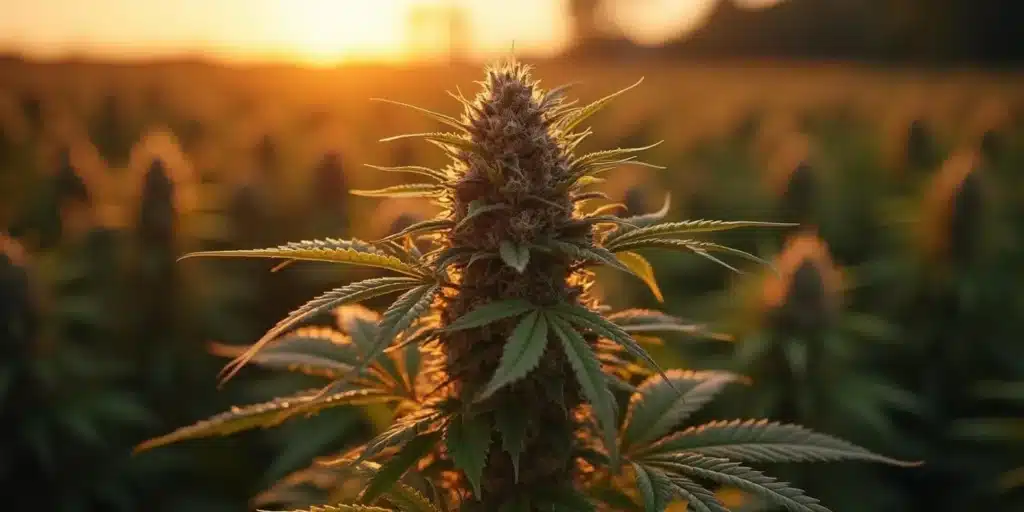
Boosting Anthocyanins in Your Grow
Achieving high anthocyanin levels in your cannabis plants can be a rewarding endeavor. Growers often tweak their methods to maximize these vibrant pigments.
Environmental factors play a crucial role. Lower temperatures, especially during the flowering phase, can enhance anthocyanin production. This is a common tactic among growers aiming for those striking purple hues.
In addition to temperature control, adjusting the nutrient regimen can also impact anthocyanin levels. Nutrients rich in phosphorus and potassium are known to support flavonoid development, making them a valuable addition to the growing process.
Watering practices can further influence anthocyanin concentration in cannabis strains. Ensuring plants are neither overwatered nor underwatered will help maintain optimal health, allowing them to reach their full pigment potential.
Practical Tips for Enhancing Anthocyanins
- Monitor temperature closely. Aim for cooler nights to boost pigment production.
- Consider using specific nutrients that promote flavonoid development.
- Choose strains known for high anthocyanin levels, such as Granddaddy Purple.
Some growers swear by organic methods. By using natural fertilizers and avoiding synthetic chemicals, you might see a boost in anthocyanin levels.
Lighting can also play a part. Adjusting the light spectrum during growth can influence anthocyanin production. This often involves using LED lights with specific wavelengths.
Experimentation is key when it comes to enhancing anthocyanins in cannabis. Trying different growing techniques and environments can yield surprising results, helping growers discover the best methods for their specific strains and goals.
Collaborating with other growers can also provide valuable insights. Sharing experiences and strategies can lead to new ideas and innovations in cultivating anthocyanin-rich cannabis strains.
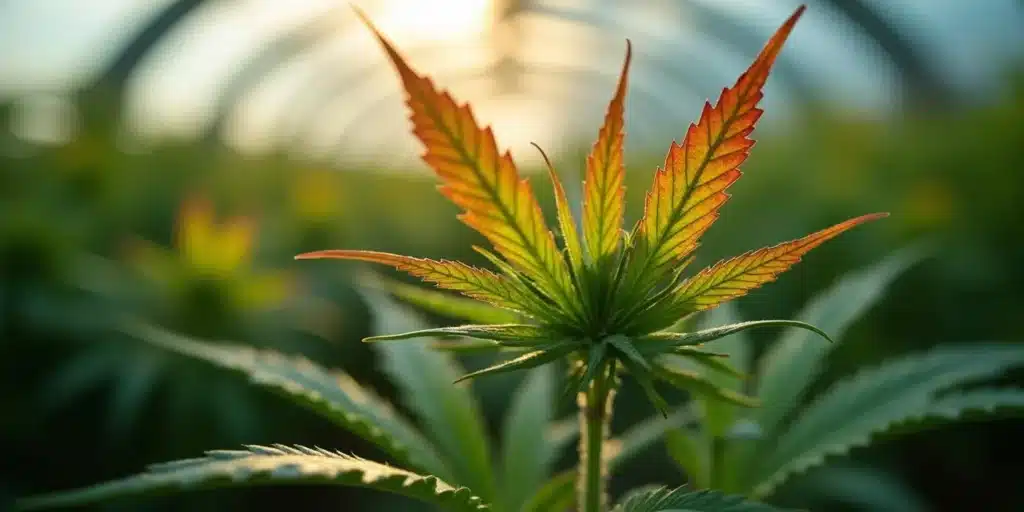
Frequently Asked Questions
What are anthocyanins in cannabis?
Anthocyanins are pigments responsible for the red, purple, and blue colors in cannabis plants. They belong to the flavonoid family and are located in the plant’s cell vacuole. These compounds are not only admired for their aesthetic appeal but also for their potential health benefits.
In cannabis cultivation, anthocyanins are often leveraged to create visually stunning plants. They become more prominent as the plant matures, especially when exposed to cooler temperatures. Many growers aim to cultivate strains with high anthocyanin levels to achieve vibrant colors and potential health benefits.
The study of anthocyanins in cannabis continues to grow, with researchers and cultivators alike eager to uncover more about these fascinating compounds. As our understanding deepens, the possibilities for enhancing both the beauty and health benefits of cannabis are likely to expand.
With ongoing research into the health benefits of anthocyanins in cannabis, the future looks bright for these colorful compounds. Whether for their visual allure or their potential therapeutic properties, anthocyanins remain a captivating aspect of cannabis cultivation.
How do anthocyanins affect the appearance of cannabis?
Anthocyanins significantly influence the pigmentation of cannabis plants. They are responsible for the striking purples, reds, and blues seen in many strains. These pigments become more visible when the plant is exposed to certain environmental conditions, such as cooler temperatures.
Growers often manipulate these conditions to enhance the visibility of anthocyanins. By doing so, they can create plants that not only look unique but may also offer distinct benefits. Strains like Purple Kush are examples of cannabis with rich anthocyanin content.
The role of anthocyanins in cannabis pigmentation is a major factor for those interested in the aesthetics of their plants. By carefully managing growing conditions, cultivators can significantly influence the color and visual appeal of their harvests.
Beyond appearance, the presence of anthocyanins may also suggest a richer chemical composition in the plant. This adds another layer of intrigue, as growers seek to balance beauty with potential health benefits and potency.
Are there health benefits associated with anthocyanins in cannabis?
The health benefits of anthocyanins in cannabis are a topic of growing interest. These compounds have antioxidant properties that help fight oxidative stress, which can lead to a variety of health issues. While more research is needed, many believe that these pigments contribute to overall wellness.
Incorporating anthocyanin-rich cannabis into your lifestyle might offer benefits such as improved heart health and reduced inflammation. Although the research is ongoing, the potential advantages make these strains an attractive option for many users.
Researchers are continually exploring the potential applications of anthocyanins in cannabis for various health conditions. As more studies are conducted, the list of potential benefits is expected to grow, further solidifying their place in the health and wellness landscape.
It is also worth noting that the cannabis anthocyanins antioxidant properties might work in tandem with other compounds in the plant. This synergy could enhance their effects, providing a more holistic approach to health and wellness.
Can anthocyanins influence the potency of cannabis?
There is a belief among growers and users alike that anthocyanins may have an impact on cannabis potency. While research is still in its early stages, anecdotal evidence suggests that strains with high anthocyanin levels might offer a more intense experience.
Choosing strains known for their anthocyanin content, such as Granddaddy Purple, could potentially enhance your cannabis experience. However, it’s essential to remember that potency can be influenced by various factors, including genetics and growing conditions.
The potential for anthocyanins to affect potency is an exciting area of study. As more research is conducted, we may gain a clearer understanding of how these pigments interact with other compounds in the plant to influence its effects.
For now, growers and users alike are encouraged to explore the possibilities of anthocyanins in cannabis. Experimenting with different strains and cultivation techniques can offer valuable insights into how these compounds might enhance the overall cannabis experience.
How can growers increase anthocyanin levels in cannabis plants?
Boosting anthocyanin levels in cannabis plants can be achieved through a combination of environmental manipulation and careful strain selection. Growers often focus on lowering temperatures, especially during the night, to promote anthocyanin production.
Using specific nutrients can also help. Some growers prefer organic methods, utilizing natural fertilizers to encourage flavonoid development. Additionally, selecting strains known for their high anthocyanin content can lead to more colorful and potentially beneficial harvests.
Lighting is another critical factor in enhancing anthocyanins. By adjusting the light spectrum, especially during the flowering phase, growers can stimulate more intense pigment production, resulting in vibrant colors.
Consistency in care practices also plays a role. Regular monitoring and adjustment of environmental conditions ensure that plants remain healthy and capable of reaching their full anthocyanin potential. Combining these strategies can lead to impressive results in both appearance and potential health benefits.


